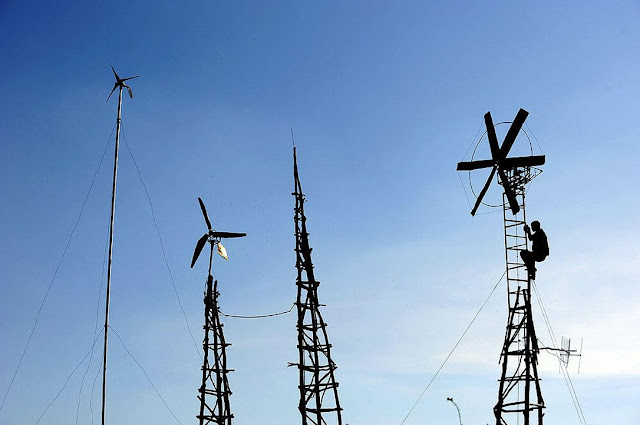(Source: thestar.com)
While scrolling through Facebook, I came across an article
that a friend had shared with a large photo and a caption titled “Share this. Let’s
make him famous because the media won’t”. Out of curiosity, I clicked on the
article and was pleasantly surprised to find that it had links to irrigation in
Malawi! Digging a little deeper into the topic, I found the story extremely inspiring
and decided to share it as this week’s post.
The story begins in Wimbe, Malawi where William Kamkwamba
and his family of nine lives. In 2001, widespread famine across rural parts of
Malawi had devastating impacts for the entire population and at just the age of
14, William could no longer attend secondary school as his family was unable to
pay the annual school fees (Menon,
2007).
However, William did not let this situation discourage him.
He borrowed textbooks which taught him about electricity and motors and it gave
him the inspiration to build a windmill to power his family’s home. By using
all sorts of different materials he could lay his hands on, including a tractor
fan blade and a bicycle frame, he managed to construct a windmill and use it to
charge his neighbours’ mobile phones and light up four light bulbs (Williamkamkwamba.com). This
was only the beginning for William and his windmill creations.
William later went on to build more windmills and his third
one was used to supply greywater for irrigation. Successive projects have provided
“clean water, malaria prevention, solar power and lighting and drip irrigation”
(Williamkamkwamba.com).
News spread about William’s invention and he was subsequently
invited to speak at a TED conference in Tanzania (Childress,
2007). You can watch his TED talks below:
William Kamkwamba: How I Built A Windmill:
Since then, William graduated in 2014 from Dartmouth College
is currently working on various projects around the world. He founded an
organisation called “Moving Windmills” in 2008 which develops programs with
aims to improve education and rural economic development in Malawi. William has
also written a book titled “The
Boy Who Harnessed the Wind”, talking about his story of how he got to where
he is today.
William’s story just goes to show that with dedication and perseverance,
it is possible to take bad situations and use them in your favour. The famine
did not cause him to give up on his education. Instead, he went and used it as
his motivation to create windmills to power pumps for irrigation. No fancy materials
or machinery is needed, just some education and a motive. A little education
goes a long way and perhaps if more people were to follow in William’s
footsteps, would top-down approaches still be needed?

Nice blog post. I have heard about William Kamkwamba previously and was excited to see you discuss it in your post. I am curious what other stories, similar to William's, exist around the world. His story goes to show that we can be doing more with less when it comes to increasing sustainability.
ReplyDeleteThank you for reading! It's really amazing what people are able to do when they put their mind to something, especially if it hasn't been done before/is against the norm. I'm sure there are a bunch of other stories (and hopefully more to come) that are similar to William's where they use unconventional methods to create infrastructure!
DeleteHi Coco, thanks for sharing about William's story - truly inspirational! Do you think given Africa's limited success with 'top down' approaches, a 'bottom up' approach where greater resources are channeled towards education and entrepreneurship instead could be the key to solving their developmental woes?
ReplyDeleteHey Clement, thanks for reading! I do think that a 'bottom up' approach is definitely a start in resolving development issues. It can have a number of benefits as locals will be more likely to cooperate as they are part of the decision process. However, I do believe that there also needs to be some input from the state (or potentially a private investor) for 'expert' knowledge and organisation. Co-management may be the best way forward in solving development issues since it allows for all parties to have a say in the process.
Delete